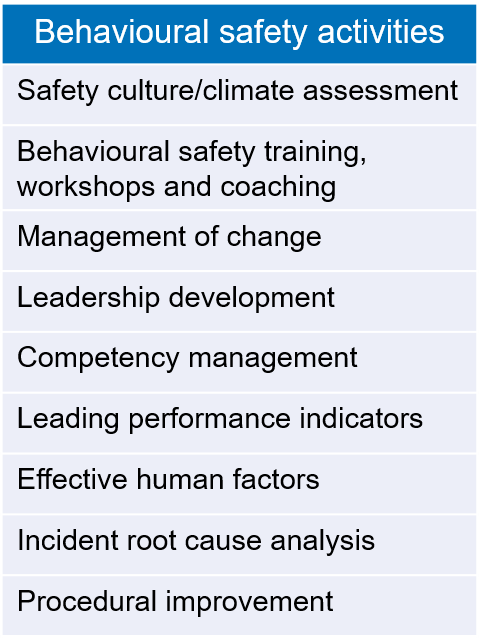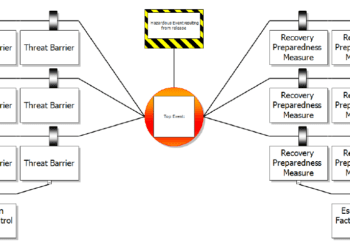An introduction to behavioural safety – how to get the best out of people
Have you ever wondered why people do what they do? Is there a way to influence the way people behave so that the job gets completed in the most efficient, productive and safe manner? In the discipline of behavioural safety, the most effective way to achieve this is to understand the underlying reasons for people’s outwardly expressed behaviour and to give them an informed choice in the workplace.
DEFINING BEHAVIOUR
Human behaviour is the only output that indicates what an individual’s inner values and attitudes might be. Human behaviours are the collection of motor actions, verbal statements, facial expressions and body language that we each use to express ourselves and to undertake social and work related activities each day. Our behaviour and its underlying drivers develop over time as a product of our biological make-up, our varying cultural influences, our life experiences and the associated memories and learning. These act as filters, through which we perceive the external world, enabling rapid thought (‘cognitive’) processing and accurate, fast motor responses.
Unfortunately, these filters also cause us to view the world in a biased way, one that is based purely on our own experience and which may not naturally consider the ‘bigger picture’ nor detect subtle but crucial changes in sensory input. This can therefore lead to inaccuracies, false conclusions and inappropriate behavioural outputs, such as ignoring the early warning signs of potential accidents.
IN THE MOOD
Behaviours are also motivated and directed in the short and long term by many additional internal and external factors. These include mood, interest and stimulation level, personally experienced and vicariously learnt consequences for actions, organizational cultural influences, relationships with colleagues, aspects of a specific task, the working environment and organizational structure.
As a consequence, there is potential for a wide range of possible behaviours by an individual for any given situation. This has the advantage of fostering original action and use of initiative, which can improve problem solving and increase work capacity. However, there can also be an increased potential for human error and associated losses.

BEHAVIOURAL APPROACH
An individual’s filters and associated behavioural outputs are learnt and as such can change. Indeed, many of the influencing factors within the workplace can also be changed.
As such, developing a cohesive and planned collection of corporate and personal activities, structures and processes which explicitly considers the individual and what is driving and influencing their behaviour is increasingly recognised as an effective approach for safety improvement [see Box 1]. Ideally, behavioural safety activities should target all levels throughout an organisation, albeit in a tailored way. A disproportionate emphasis on ‘front line’ staff may not address why a person is behaving in a certain way. Effective behavioural safety programmes should make appropriate changes throughout the business, based on the identification of underlying causes.
Staff input and buy-in, trust and communication are key if an organization wishes to move from a ‘blame’ culture towards a ‘just’ culture and make real safety improvements. Competency development must be included, together with mentoring and empowerment, so that people can make informed choices and work together with a clear sense of responsibility for their own actions and a belief in the organisation.
CONCLUSION
If an organisation wishes to make a step change in safety performance, a bespoke behavioural safety programme may well be part of the solution. The key to getting the best out of an organisation as a whole is to harness its collective expertise and potential and get the best out of its people.
This article first appeared in RISKworld Issue 18









